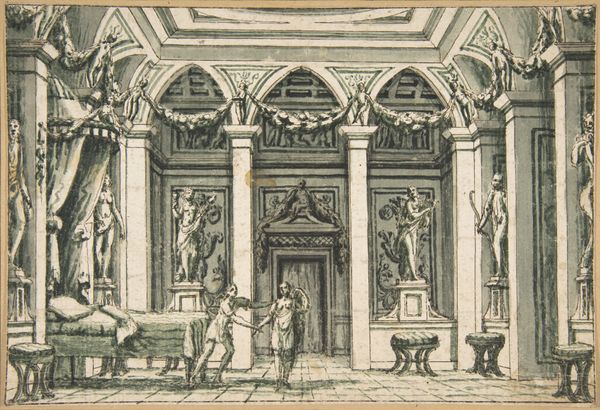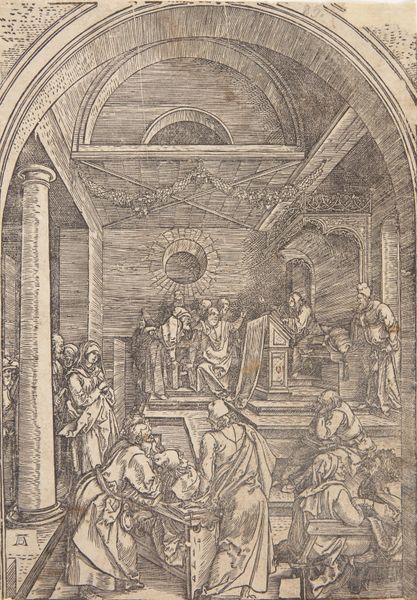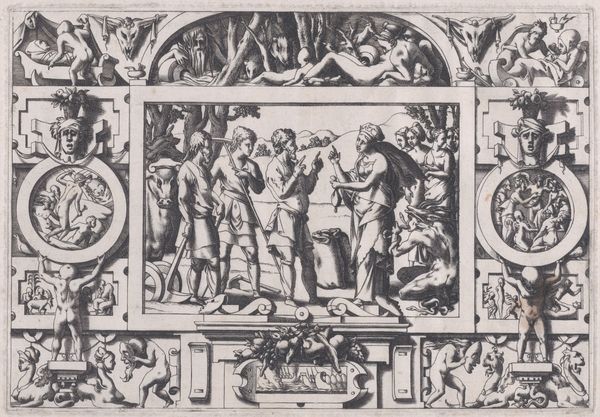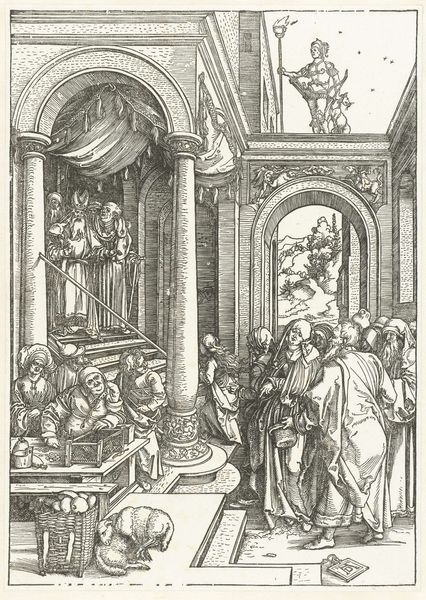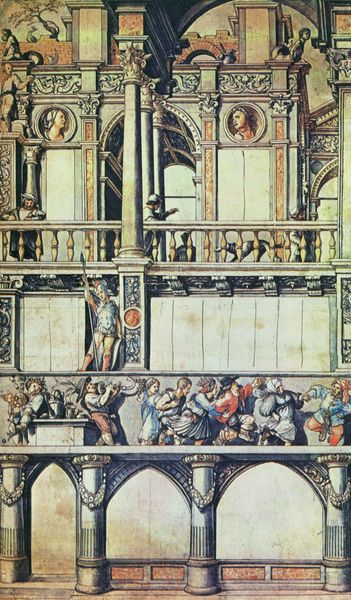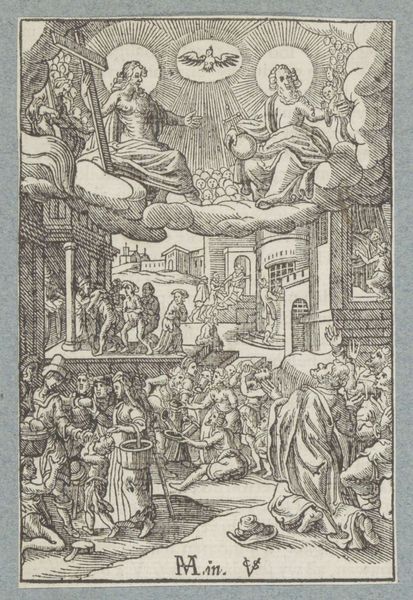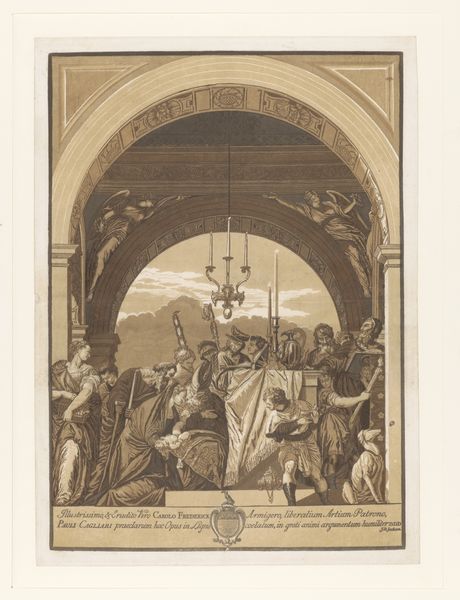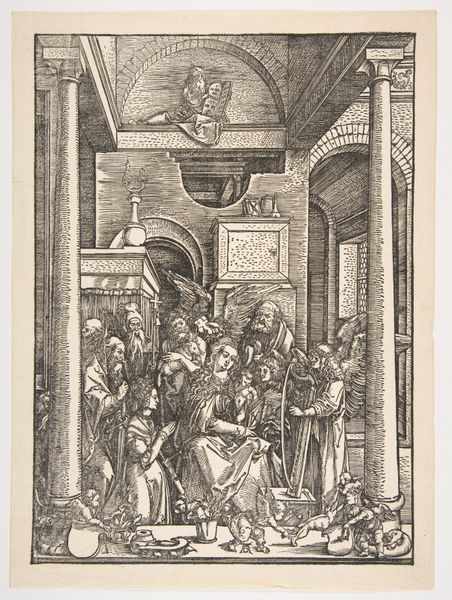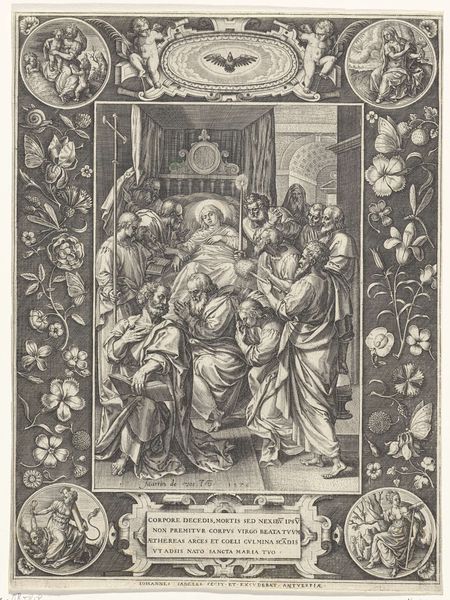
Scenes from the Life of St. James (reconstruction from coloured black-and-white photos) 1457
0:00
0:00
andreamantegna
Destroyed
painting, oil-paint, fresco, architecture
#
high-renaissance
#
narrative-art
#
painting
#
oil-paint
#
holy-places
#
fresco
#
oil painting
#
history-painting
#
academic-art
#
italian-renaissance
#
mixed media
#
architecture
Copyright: Public domain
Editor: So, this reconstruction, "Scenes from the Life of St. James," a fresco by Andrea Mantegna from 1457. It’s so dense, so filled with architectural details and figures, it’s almost overwhelming. It definitely feels... staged. What do you see when you look at this, beyond just the obvious narrative? Curator: Oh, staged is a perfect word! For me, it's about the stagecraft, really. Mantegna is meticulously constructing these little theatrical sets within each panel. See how the light catches the arches, how each figure seems positioned for maximum dramatic effect? He’s playing with perspective, drawing you into these self-contained worlds. The original fresco was destroyed during the Second World War. A testament of cultural lost, the colour reconstruction only brings some of its atmosphere and drama, but cannot fill that absence. Do you get a sense of the overall emotional tone despite its destruction? Editor: Absolutely. There's a kind of... grandeur. Even though it's a digital image, it seems to portray a very rich history of St James, of trials, journeys. How would that stagecraft have influenced the overall reception back then? Curator: Massively! Remember, for many, these images *were* the Bible. Mantegna wasn’t just illustrating scripture; he was shaping people’s understanding, imprinting these powerful scenes onto their collective memory. So, the dramatic staging, the expressive faces—it all served to amplify the religious message, to make it unforgettable. Does this image evoke a feeling of that collective understanding of its own destruction? Editor: It's a kind of reminder of lost, of course. I'd never considered how intentional each aspect would have been back then. Curator: Exactly. It’s like peeking into a Renaissance memory palace. Editor: I'll never look at Renaissance art the same way again, it's been great to consider his intent more closely. Thank you. Curator: A delight! Perspective is everything, no? It is, after all, an echo, shaped by what remains unseen, what remains lost forever.
Comments
No comments
Be the first to comment and join the conversation on the ultimate creative platform.
